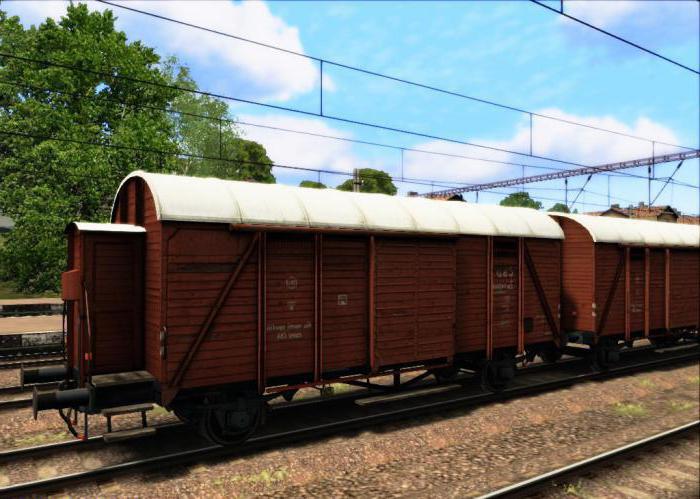Railway transport: how much railway car
Railway transport is an importantcomponent of the economy of any country. It accounts for almost half of all transported goods. This is one of the safest ways to transport large volumes of cargo. By rail almost all types and volumes of cargo are transported, including bulk, bulk and oversized cargo. For these purposes, there are different types and sizes of railway cars. The main disadvantage of rail transport is the attachment to certain routes of travel. Much of the volume of a railway car depends on the cost of transporting a unit of cargo.

Covered wagons
The purpose of covered wagons is transportation of piecegoods (household goods, household appliances, clothes, furniture, etc.) and cereals of a wide range, which need protection from atmospheric precipitation and mechanical damage. Covered cars are equipped with hatches and doors to facilitate the loading and unloading process. The volume of the rail car of the covered type of the standard 4-axle model 11-066 is 86.4 m3 up to the level of hatches and 120.15 m3 - total volume including roof for overallDimensions (L x W x H) in mm: 13800 x 2760 x 2791. The carrying capacity of such wagons is 68 tons. For the transport of special loads, such as animals and poultry, there are specialized covered wagons with the necessary additional equipment.
Covered wagon-hoppers are designed for transportationany bulk goods. These are covered bunker wagons, made in the form of a funnel. Loading is made from above, unloading - from below, through special hatches on the bottom, which are called "hoppers". The internal volume of the railway wagon-hopper is 93 m3. Wagons of this type are ideal for transporting cement, soot, cereals.

Railway open wagons
Railway gondolas are designed fortransportation of goods that do not require protection from atmospheric influences: cars, equipment and machinery, bulk and bulk cargo. Gondola car is a railway platform with sides, but without a roof. The absence of a roof greatly facilitates the loading and unloading, which, depending on the cargo, can be carried out by car dumpers. The volume of the railway car of this type is 75 m3 at a carrying capacity of 69 tons. In modern rail transport, gondola cars with six and eight axles, carrying capacity of 95 t and 125 t respectively are also used. The construction of gondola cars can be different: straight blind walls, sloping walls, flat floor with unloading hatches, without them, with hatches on the sides. For bulk cargoes also use self-unloading gondola-hoppers.

Isothermal and refrigerated wagons
Railway cars of covered type,intended for the transport of perishable goods that need to comply with the temperature regime (meat, fish, fruit, etc.), - isothermal or refrigerator wagons. The volume of a rail car of a refrigerator type, depending on the model, is in the range from 75 to 130 m3. To maintain the required temperature, the housingIsothermal wagons are sheathed by special thermal insulation. The refrigerated wagons are equipped with refrigeration units, with the help of which the necessary temperature regime is maintained.










